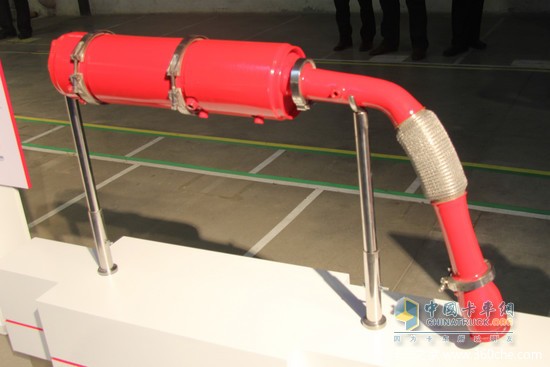WHTC cycle and DPF see the implementation of technical focus of Beijing Five emission standards
According to sources, on June 1, 2015, the Beijing-based diesel vehicle will be formally implemented. From this day onwards, products that fail to reach the 5th level will not be able to apply for the environmental protection catalogue. It is understood that the Beijing Five standard for light diesel vehicles has not changed much compared with the National Five standard. The Beijing-based heavy-duty diesel vehicle has added two components. One is the WHTC cycle (emissions at low temperature and low speed), and the other is DPF.
WHTC cycle: not a simple "use"
The WHTC cycle is the engine emission test cycle proposed in Europe's 6th phase emission standard (version: (EU) No 64/2012) and is equivalent to the ETC cycle in China's current emission regulations to measure engine transient emissions. Using the WHTC cycle test results to adjust and recalibrate the engine emissions, the fuel injection can be optimized, the PM emissions in the low-speed and low-load regions of the engine can be effectively adjusted, and the discharge conditions outside the current regulation emission control zone can be improved. Applying this technology to heavy-duty diesel vehicles can effectively control vehicle NOx emissions and contribute to the implementation of Beijing Five emission standards.
However, it is worth noting that WHTC is an independent engine emission test cycle system. It is not a simple fit to attempt to monitor the appropriate data in cooperation with the engine. According to the introduction of engine technicians, in order to obtain data to meet emission requirements, it is necessary to ensure that the engine-related technical values ​​are consistent with the WHTC system. Only when they are fully matched can the effective measurement of the technology and experimental accuracy be achieved, but the technology of the engine The matching of numerical values ​​with WHTC is obviously not a simple matter, and the technical conditions for implementation are much more complex. Not only is the engine business a headache, as the OEM is also faced with the problem of matching engine data. It can be said that as an ideal engine emission test cycle system, the WHTC is not a simple "take-up" but an exact match of data to be effective.
DPF: Able to Purify Emissions Particle regeneration is a challenge
Another key to the realization of the heavy-duty vehicle Jingwu is the addition of DPF. Compared with State V, Beijing Five requires that the number of particulate matter not exceed 6×10 12th power, and whether the installation of DPF can truly achieve the purification of particulates?

PDF device
The DPF is a device installed in the exhaust system of a diesel vehicle to reduce particulate matter (PM) in the exhaust through filtration. The DPF system consists of a recovery unit, a regeneration unit and a control system. When the DPF is working, particles are captured through a combination of surface and internal filtration devices, such as diffusion precipitation, inertial precipitation, or linear interception, which can effectively purify 70% - 90% of the particles in the exhaust. It is the most effective and direct method for purifying diesel engine particulates. One of the methods, in addition to the effect of removing smoke odor and reducing noise, has been commercialized internationally.
When using DPF, the pressure value of the control system has been set and will not affect the engine. As the collection of black smoke particles increases, the pressure displayed by the monitor increases and alarms occur. The trap must be replaced at this time, otherwise the engine will be affected. In addition, DPF technology is relatively complex, the chemical reaction temperature is high and the performance is not stable enough. In addition, DPF requires fuel sulfur content below 50 PPM. With the increase of working hours, the particulate matter (PM) inside the filter element increases, resulting in an increase in exhaust back pressure, which will affect the economical efficiency of the diesel engine. The removal of PM from the filter element is called DPF regeneration. The biggest challenge for DPF is regeneration.
Although WHTC emission testing procedures or the installation of DPF are all facing technical difficulties, some domestic engine companies have already started relevant research, including Weichai, Cummins, and others who have already done WHTC related work, and DPF gradually matured. Stimulating the continuous expansion of its scope of application, I believe that the implementation of Beijing Five emission standards is still expected.
China Switch Cabinet,Battery Charging Cabinet manufacturer, choose the high quality Solar Battery Storage Box,Solar Battery Cabinet, etc.
Switch Cabinet
Switch Cabinet,Battery Charging Cabinet,Solar Battery Storage Box,Solar Battery Cabinet
Shenzhen Hongjiali New Energy Co., Ltd. , https://www.hjlcharger.com